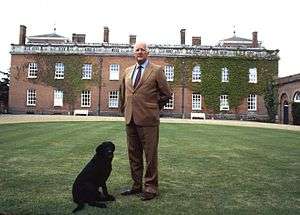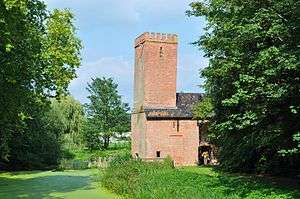Euston Hall


Euston Hall is a country house, with park by William Kent and Capability Brown located in Euston, a small village in Suffolk located just south of Thetford, England. It is the family home of the Dukes of Grafton.[1]
Euston first appears in the Domesday Book in 1087 as a manor belonging to Bury St. Edmunds Abbey. In 1578, Elizabeth I stayed at the manor hall with the Rookwood family on her way to Norwich. The estate, in near ruin, was purchased in 1666 by Henry Bennet, Earl of Arlington and Secretary of State to the newly restored King, Charles II. He constructed a grand house in the French style, built around a central court with large pavilions on each corner. Charles II paid the first of several visits to Euston in 1671. John Evelyn, the diarist, was amongst the large court that accompanied the King.
In 1672 Charles II arranged a marriage between nine-year-old Henry FitzRoy, his illegitimate son by Barbara Villiers, and Isabella Bennet, the Earl of Arlington's five-year-old heiress. FitzRoy was created 1st Duke of Grafton in 1675, and the young couple went through a second wedding ceremony in 1679 when Isabella had reached the age of twelve, then the minimum legal age to marry with consent. The Duke and Duchess inherited Euston Hall in 1685. In about 1750 their son, the second Duke, decided to re-model the house and employed Matthew Brettingham, who supervised the execution of William Kent's and Lord Burlington's design of Holkham Hall in Norfolk. The domes at Euston were replaced by the low pyramid roofs seen today, and part of the house was refaced. In 1902, a disastrous fire destroyed the south and west wings and the fine Verrio ceilings. The house was soon rebuilt on the same plan, but later the south wing, and most of the west wing, were pulled down by the Tenth Duke in 1952.
The old park was designed by the diarist John Evelyn,[1] a noted landscape gardener and an expert on trees, with a canal, straight rides and avenues. His designs for Euston included the walk through the pleasure grounds which can still be enjoyed today. The whole park and river layout was designed by William Kent in 1738, and is considered one of his great works. His temple and entrance archway survive. Capability Brown worked at Euston intermittently from 1776 to 1784. Euston's watermill was built in the 1670s by Sir Samuel Morland for irrigation and grinding corn. In 1731, it was redesigned by William Kent to resemble a church, and in 1859 an iron waterwheel was added by Charles Burrell. The Temple (not open to the public) is an unusual octagonal folly designed by William Kent in 1746. It was his last work. It has a magnificent octagonal banqueting hall rising to a dome.
Euston Hall has a fine art collection, but one Canaletto deserves special mention. According to the Sporting Magazine, February 1793: "About the year 1735 he [the 2nd Duke of Grafton] kept foxhounds at Croydon and went to London very early on the days he hunted. The old Duke used to complain bitterly of the interruption he met with (in crossing the Thames at Westminster) for the delay and inattention of the ferry man, etc., by which he often lost several hours of a fine morning before he arrived in Croydon. To remove this inconvenience he projected a bridge at Westminster, and brought a bill into Parliament for its erection, which was completed in the year 1748." For many years there hung at Euston Hall a contemporary Caneletto of the bridge being built.
The current house and grounds comprises about 110 acres of parkland and 65 acres of pleasure grounds. The landscaping is undergoing major restoration work expected to be completed for the Capability Brown tercentenary in 2016.[1]
Notes
- 1 2 3 Owen, Jane (April 17, 2014). "Duke of Grafton uses R&B to restore Euston Hall's pleasure grounds". Financial Times. Retrieved April 20, 2014.
References
- The Dukes by Brian Masters (2001 ed.) Pimlico. ISBN 0-7126-6724-5
External links
- Map sources for Euston Hall
- Official site
-
 Euston Hall in Views in Suffolk, Norfolk, and Northamptonshire (1818).
Euston Hall in Views in Suffolk, Norfolk, and Northamptonshire (1818). - Historic England. "Details from image database (284149)". Images of England.
Coordinates: 52°22′24″N 0°47′12″E / 52.37345°N 0.78676°E